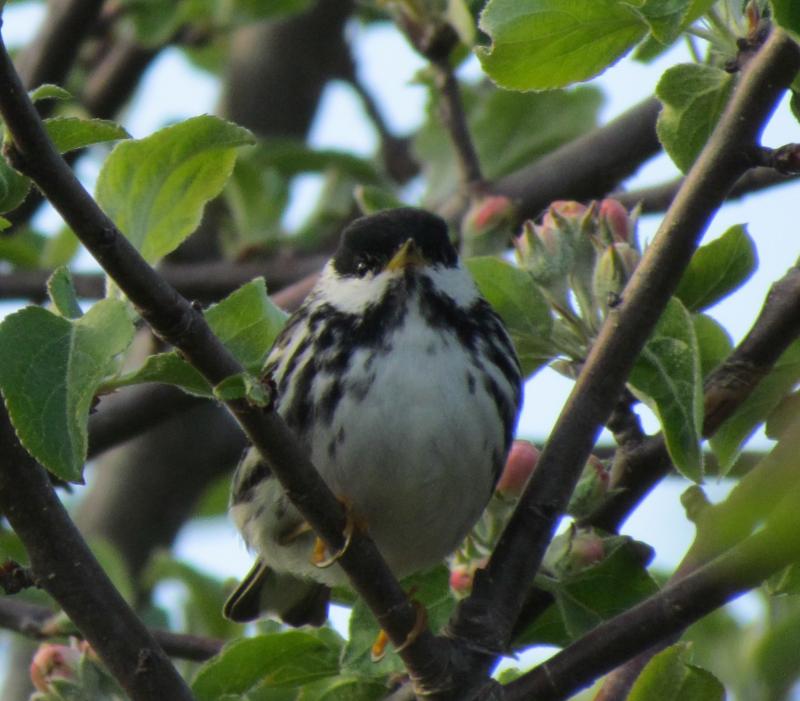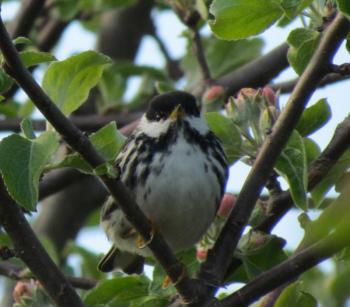Superstars of migration
We were out on Monhegan Island over Memorial Day weekend. After a wild boat ride out courtesy of very strong northerly winds, it was a pleasure to arrive on the island to be greeted by lots of migratory birds.
One of the species that we saw a lot of was the blackpoll warbler, a bird that deserves a “thank you” from auto mechanics — blackpolls have a high, ringing song that sounds so much like squeaky brakes that there may well be a surge in automobile brake servicing work in the last two weeks of May when the birds arrive!
The song is a series of high-pitched, drawn-out “seet” sounds that start soft, get louder, and then get softer again. For birders, the arrival of these “squeaky brake” sounds is a signal that we’re getting closer to the tail end of spring migration.
Along with having a song that could be missed and dismissed as part of the jumble of sounds constantly around us, the male blackpoll warbler, at first sight, might be dismissed as a black-capped chickadee. Blackpoll actually means “black cap,” hence the potential confusion.
There are a number of features on a blackpoll warbler that are very different from a chickadee, including the streaked back, lack of a black throat, and streaked undersides. One of the most striking differences, though, are the bright yellow legs and feet of the warbler.
Most blackpoll warblers that we are seeing now are on their way north to the Boreal Forest of Canada and Alaska, where the bulk of them nest. We do have some that nest here in Maine, primarily just in the high-elevation stunted spruce forests on the tops of the higher mountains of the state. In fact, blackpoll warblers nest in these islands of northern-like habitat on the highest elevation mountains as far south as the Catskills of southern New York State.
Blackpoll warblers are famous among birders and ornithologists for their long-distance migratory feats. These tiny, chickadee-sized birds spend their winters in South America, primarily in the Amazon Basin. To make it even more remarkable, in the fall they take off from Maine and the Maritimes and strike out over the ocean on a bearing toward Africa.
After flying for many days, day and night with no place to stop for rest, food or water, they are pushed westward by the prevailing winds so that they make landfall in northern South America. In the spring they fly a more direct, but still amazing, route north across the Gulf of Mexico to the U.S. and then hopscotch northward.
All of this had been inferred from observations of birds and specimen records but had not been directly proven until this past year. In summer 2013, researchers caught blackpoll warblers in Vermont and Nova Scotia and attached devices called geolocators to them. They retrieved them from five birds the following summer and published a paper last month describing the details of the migratory journeys of the birds.
The research confirmed that the birds traveled up to 2,000 miles in their fall migration and flew up to 72 hours of nonstop flight in what is the longest recorded nonstop over-water flights by a songbird yet recorded!
Consider that this is a bird the size of your thumb and you easily realize why they are superstars of migration!
Event Date
Address
United States
























